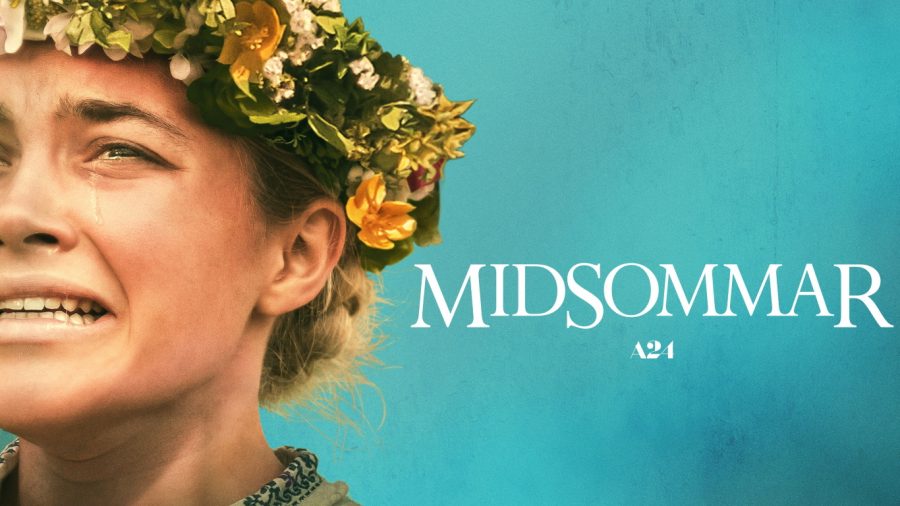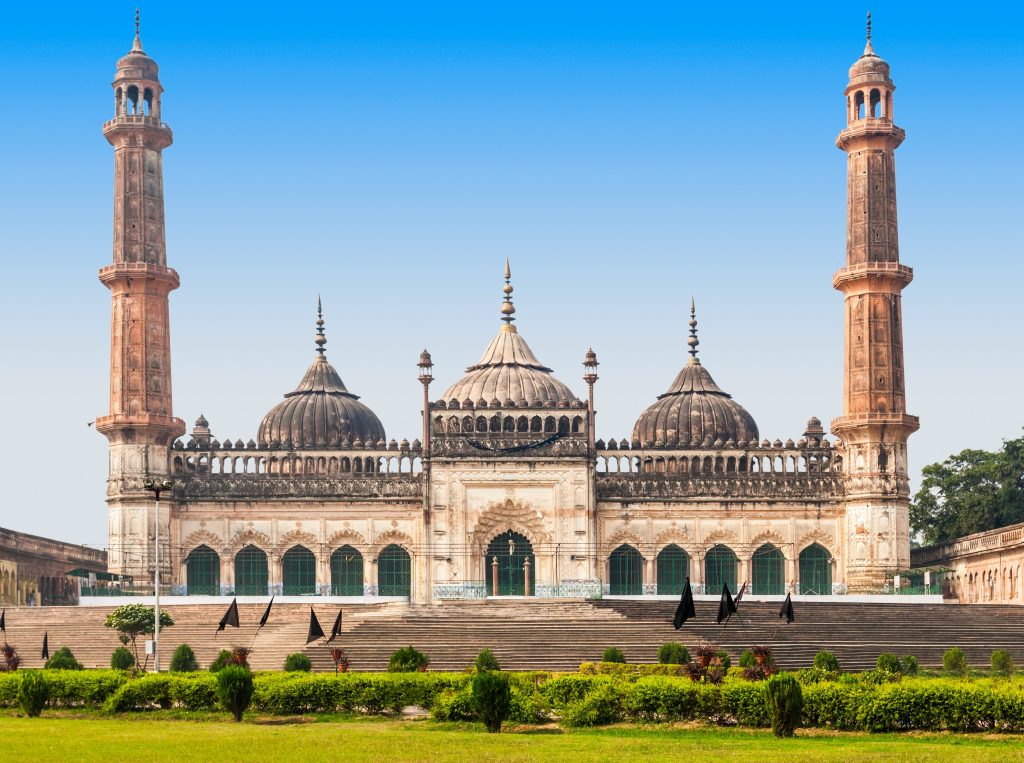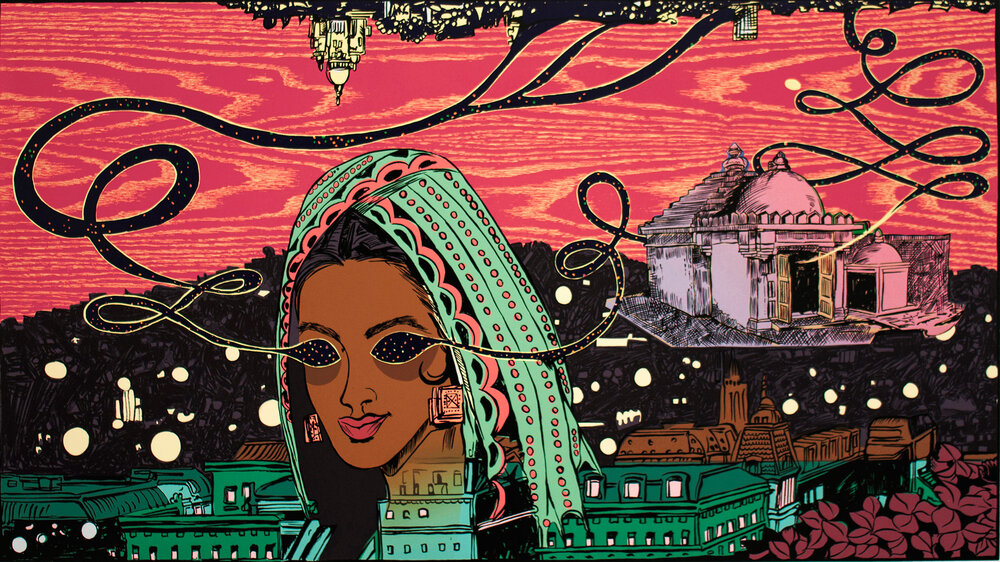Vaishnavi Srivastava
Warning: movie spoilers, gore and nude imagery.
Over the years post its release back in 2019, Midsommar -the beautifully grotesque horror by the Hereditary-famed director Ari Aster has certainly made its rounds in conversations amongst the “cinephile” circles for the movie’s out-of the-ordinary imagery and visuals which might be a little too, well, gorgeous for a horror movie genre. The movie, nevertheless, leaves the audience with a sense of eerie-ness and a feeling of unsettling terror, to say the least.
The movie begins with the main character Dani (played by Florence Pugh) losing her entire family (parents and sister) to a mass suicide instigated by Dani’s mentally unstable sister via carbon monoxide poisoning. The cryptic texts by her sister is what foreshadows the sorrow that is about to come Dani’s way. “I can’t anymore, everything’s black. Mom and Dad are coming too”. The gut-wrenching scene that follows, displays the first no-horror nightmare to the audience which inevitably leaves goosebumps on one’s skin as we see Dani breaking down in the arms of her un-present boyfriend Christian (played by Jack Reynor).
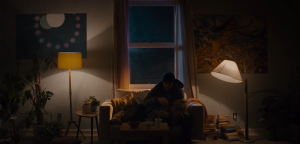
The scenes that follow take place in a Swedish pagan commune called The Hårga, Dani is invited by Christian and three of his unwelcoming friends from grad school to visit Pelle’s (Played by Vilhelm Blomgren) hometown. Pelle who is one of the three friends, leads them to his village to witness the Midsummer Festival. As the movie unfolds, the audience slowly realizes the village turns out to be a cult. The gutting scenes that follow reveal the staunch horror of the movie that ends with Dani crowned as the May Queen regaining her sense of agency.
Analysis of the Artworks.
Have you seen that video where an individual hides 200 small plastic ducks in their apartment for their roommates to find in the most unusual places? Well, rewatching Midsommar is a similar experience wherein Ari Aster has hidden monstrously detailed and disturbingly unique Easter eggs out of a Stephen King novel throughout the movie in the form of specially curated artworks.
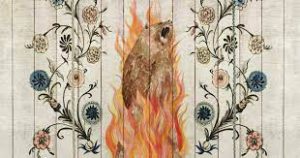
Courtesy: A24
Reviews often call the movie a “surrealist nightmare”, and rightfully so. Aster took cues from the “Theatre of Cruelty” by Antonin Artaud. Theatre of Cruelty in its essence is a discipline followed primarily in theatre wherein the relationship between the performers and audience is disrupted in order to confront or shock the viewers, and furthermore, connect via emotions and jolt up the spirits. Theatre of Cruelty is, thus, inspired by Surrealism, an art movement that aimed to express the unconscious and reveal the strength of imagination.
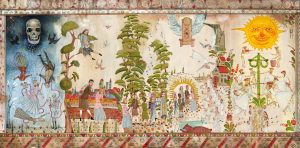
Courtesy: A24
The artworks in Midsommar foreshadow almost all the big events that are about to take place in the upcoming scenes. The biggest Easter egg is of course the mural displayed at the beginning of the movie. The mural made by the artist Mu Pan portrays the entire plot of the movie in its own Bosch, Bruegel, Tibetan Tanka-inspired way to spoil the movie in the most artistic way possible. The mural is divided into 4 distinct phases, the first half depicts Dani losing her family wherein she connected to each of the family members via an umbilical cord that represents the gas pipes, and the second phase shows Pelle at the top devising the plan of luring his friends into the sacrifice, wherein the groups are shown entering the village through the sun-like structure, the last phase of the mural showcases the final horrific scenes of the movie from the suicide of the 72-year old elders on the attestupa, the May Queen selection along with skeletons who foreshadows the numerous deaths in the movie.
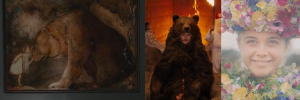
Courtesy: A24
The scene wherein Dani is trying to sleep post the traumatic incident of losing her family has an enormous painting above her (Dani) of a young girl wearing a flower crown kissing a bear. This is yet another massive Easter egg of the story wherein the girl is representative of Dani as the May Queen and the bear is representative of Christian who meets the fate of the sacrifice dressed in bearskin.

Courtesy: A24
One of the other very important foreshadowing that is showcased in the movie is the series of paintings that showcases the steps to the mating rituals that were later performed between Christian and Pelle’s sister.
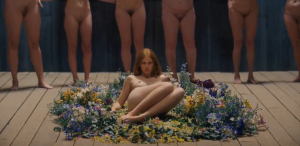
The worldbuilding of the pagan community is done through the presence of the artworks and Rune symbols. The murals in the world of Midsommar are a way of documenting rituals done by the people of Hårga as the rituals performed in the movie take place every 90 years and since nobody in the community can be older than 72, the people seek these murals as reference to their “way of life”.
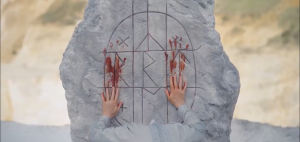
Other artistic references in the movie include Joel Peter Witkin’s Myself as a Dead Clown (2007), Hilma af Klint’s Group 1, Primordial Chaos no.16, John Baur’s Lucia (1913) and many more. As inspirations to the artworks of the movie and the several scenes.
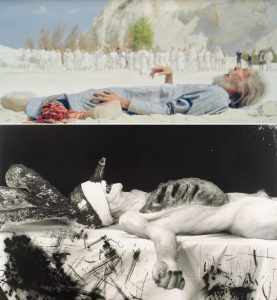
Courtesy: artnet
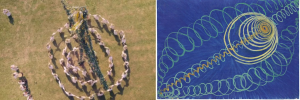
Courtesy: artnet
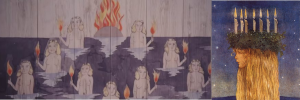
Courtesy: artnet
**
The movie is a stark contradiction in terms of visuals and content. The colour palette of the movie contains strict whites and pastels along with an overwhelming amount of flowers, kind smiles and a cottagecore-esque setting all of which are opposing aesthetics to a typical idea of the horror genre. Therefore, throughout the movie, the audience does not expect an incoming jump scare or brutally dismembered body parts. Aster thus, uses the Theater of Cruelty to its optimum reach in order to bring out the horrors that are capable by human hands.
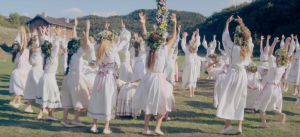
Courtesy: A24
Midsommar on a superficial scale is often interpreted as a break-up story, a tragedy of the death of Dani and Christian’s relationship, where Dani emerges as the queen burning her past and memories of her absent and unfaithful lover Christian. This take, however, undermines and ignores the true horror of this white supremacist horror tale. The whiteness of the movie is very chalantly slapping the faces of the audiences in the forms of the white lights, clothes, skin, and inbreeding as well as what these ideologies do to the foreign visitors of the world. Therefore, to answer the questions that very popularly circulate the debate, Is Midsommar a horror with the absence of any and all ghostly figures? It most certainly is, as the movie vehemently portrays the horrific capabilities of the human race and unimaginable events conjured by extremist fascist ideologies. Aster, like a religious follower of the principle, uses Theatre of Cruelty sufficiently in order to instigate horrors not just through gore imagery but also distressfully charming artworks that can’t help but catch the eyes of the viewers. He highlights these loud details onto the mute paintings that inevitably provide more depth to the fictional cult. The artworks in the movie introduce realism to fiction via murals and paintings that speak louder than words ever could.
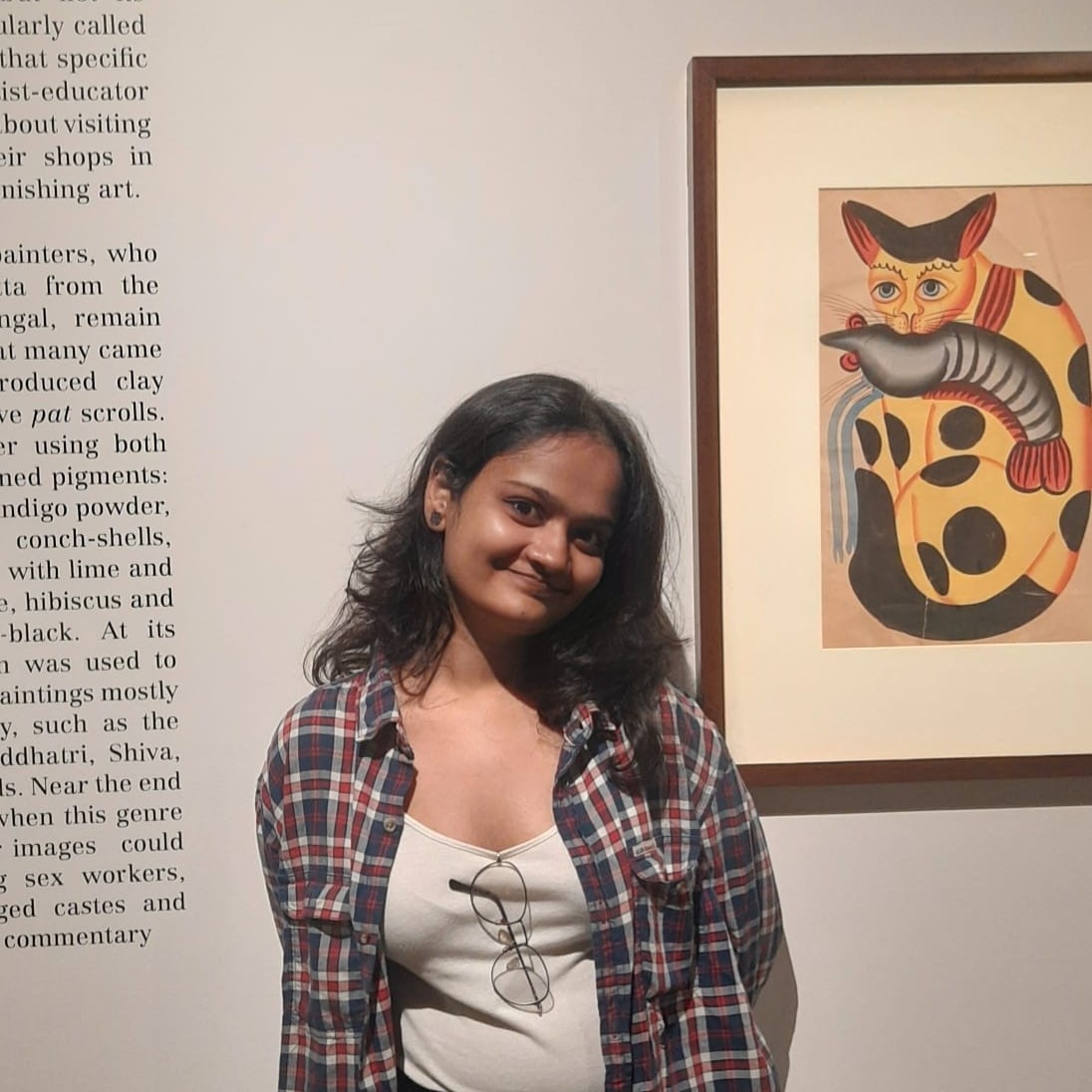
Vaishnavi Srivastava is a learning writer, a keen researcher and a literature enthusiast. She is a Sub-editor at Abir Pothi.

